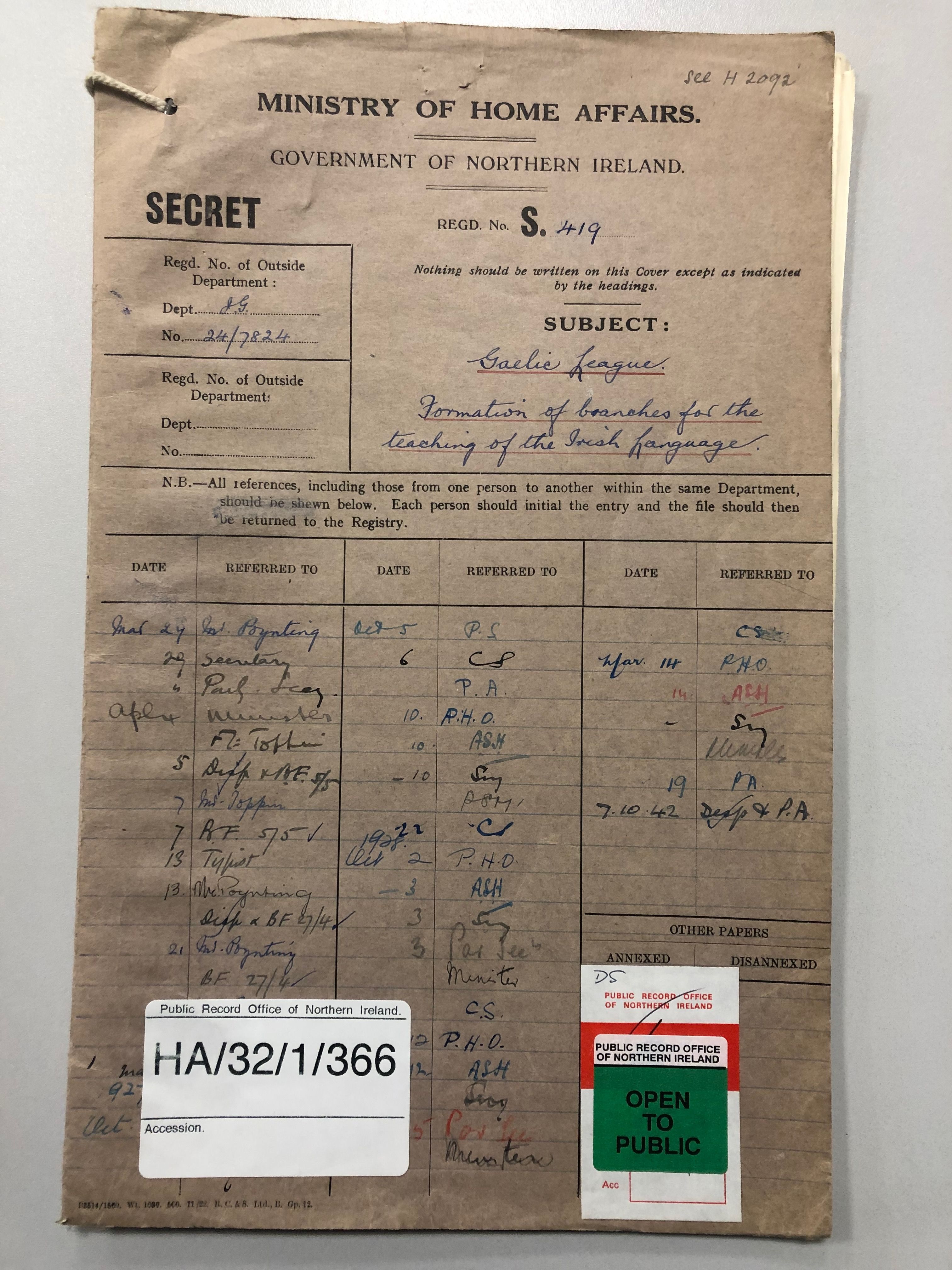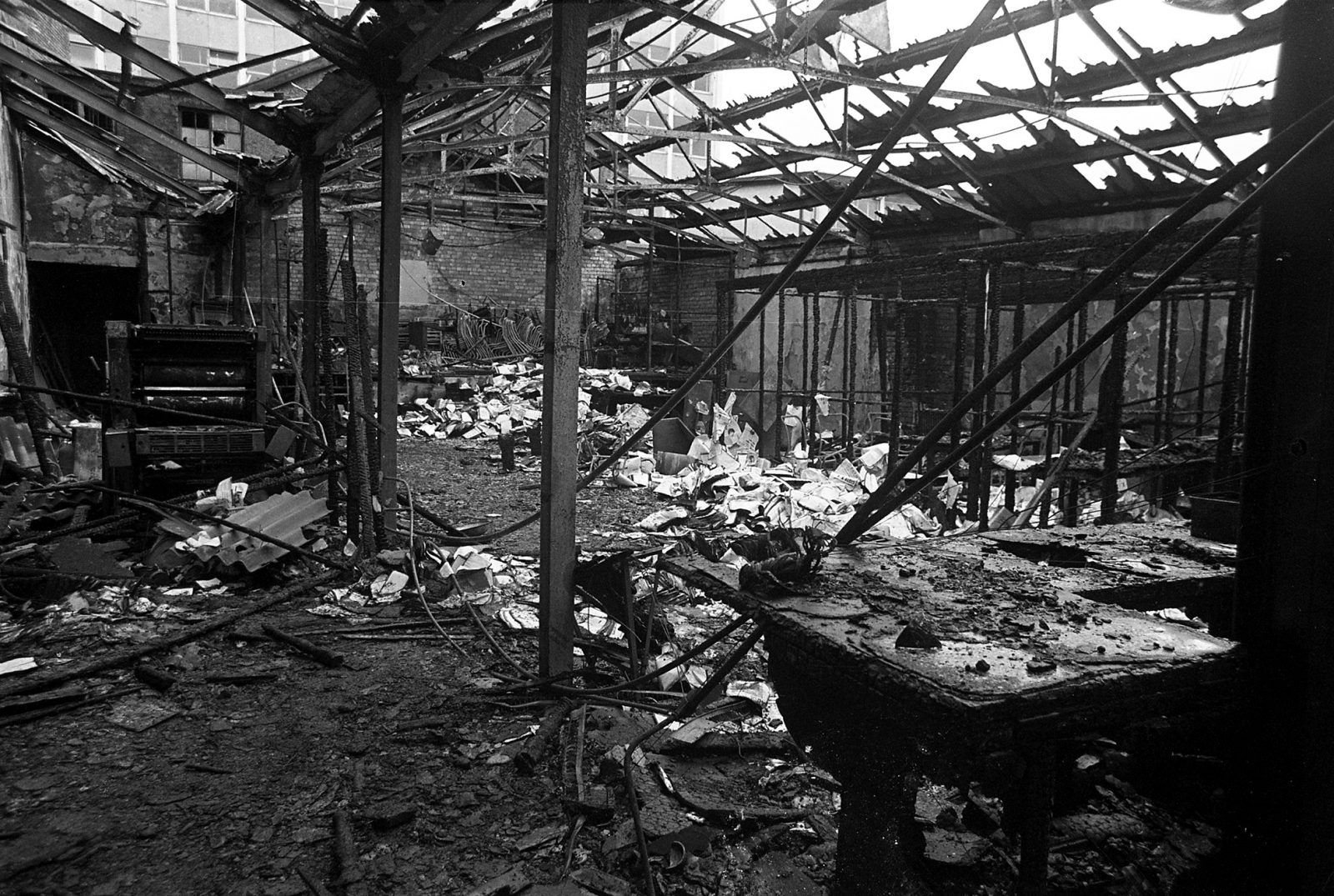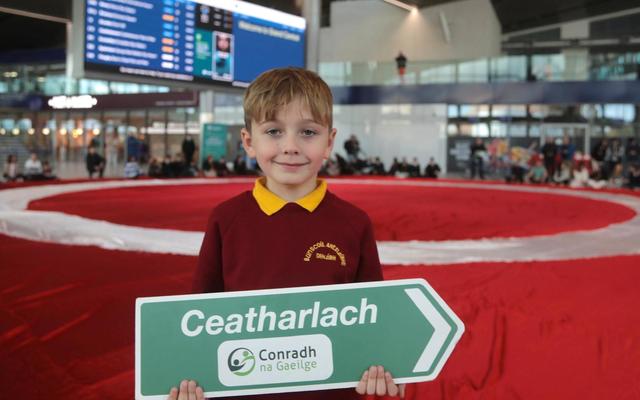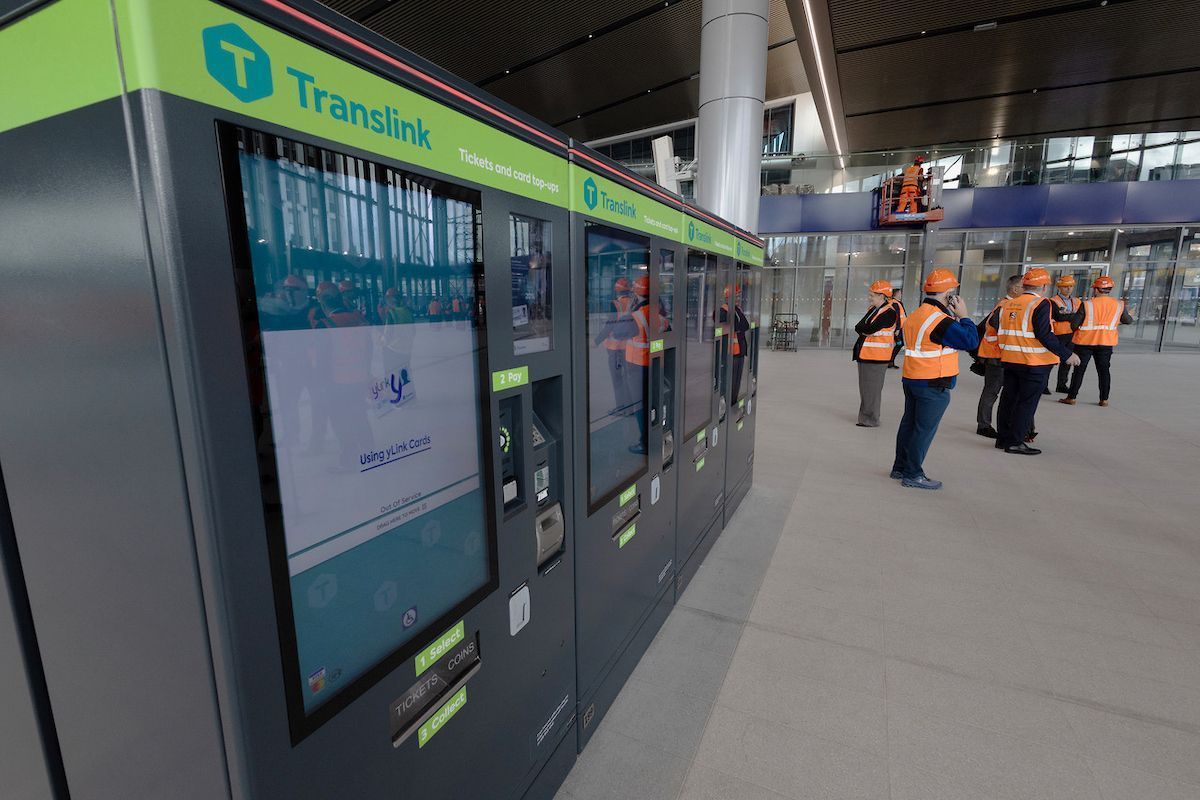Belfast’s Grand Central Station recently opened without any signage in the Irish language, ignoring representations from both Belfast City Council and the Sinn Féin Minister for Infrastructure.
Translink’s decision seems to be linked to a fear of causing offence. Yet, public signage in Irish is as old as the Ogham stones and the notion that a language might cause offence is surely bizarre.
Then again, one of the legacies of unionist hegemony has been the censoring of visible signs of Irishness in public spaces as well as a deep suspicion of the Irish language.
A prime example is revealed in a file marked secret but now available in PRONI’s Stormont Ministry of Home Affairs files. The secret file, spanning 1923 to 1943, deals mainly with RUC surveillance of the activities of the Gaelic League (Conradh na Gaeilge).
The origin of the file was an RUC report that two branches of Cumann na nGaedheal (now Fine Gael) had been founded in Tyrone in the Spring of 1923. The RUC Inspector General was asked by the Ministry to provide periodic reports on this new organisation, which it assumed at first to be the Gaelic League under a new name, and duly promised to ‘keep a very a close eye’ on this organisation.

Once the initial confusion was resolved, the RUC continued to provide reports of Gaelic League (Conradh na Gaeilge) meetings. These reports are based on officers’ eye witness accounts and typically include a copy of the Irish News report as well as the RUC’s own overview. Among other things, the file shows that the RUC had its own translator who gave their considered opinion, along with other information, on the difference in meaning between the Irish words conradh and cumann.
The Ministry of Home Affairs had the power, under the Civil Authorities or Special Powers Act (1922), to proscribe organisations, meetings, newspapers, and take various other measures deemed necessary "for preserving the peace and maintaining order in Northern Ireland".
In its initial correspondence with the RUC, one of the Ministry staff mentions that while the Gaelic League had been proscribed in 1919, it would be sufficient for the time being that the police should provide periodic reports.
AN TINE BHEO: ArdScoil was destroyed in blaze in the 1980s
Three reports were provided for the Ministry in 1927, 1928 and 1929, all dealing with public meetings held by the Gaelic League. The first two were held in St Paul’s Hall, Hawthorne St (Falls Rd) in October 1927 and 1928 and were part of the Gaelic League’s promotion of its new term of classes and activities. In each case, a well-known special guest accompanied members of the Catholic clergy as principal speakers.
The first RUC report notes, in particular, "The local suspects and a large number of past and present members of the IRA, were present." The report for 1928 shows the same interest in "local suspects":
I beg to report that this meeting was held as arranged. Lord Longford, accompanied by Lady Longford, arrived by the 8 p.m. train and was met by Suspect Rev. Robt. Fullerton and John McMullan, President and Secretary respectively, of the Gaelic League. About 500 people attended the meeting, among them being a number of R.C. Clergymen, Catholics of the middle class, and nearly all the local Suspects, Hugh Corvin being one of the chief stewards. The attached cutting from the Irish News of the 9th instant, gives an abbreviated but accurate report of the meeting. Everything passed off quietly.
Hugh Corvin was the son of an RIC sergeant and a leading IRA member who ran his own accountancy business. "Suspect Rev. Robt Fullerton" was the parish priest of St Paul’s and chair of the Belfast Gaelic League. Fr Fullerton being a well-known Sinn Féiner presumably explains the label ‘suspect’ which doesn’t seem to have been applied to author John McMullan (Seán Mac Maoláin). Going by the Irish News report which the RUC added, Fr Fullerton’s speech at the 1927 meeting inspired the crowd by making them a bold promise:
He was going to see to it that the Gaels of Belfast had a hall worthy of them – a central rallying place for the social uplifting of the community. (Applause.) They would have to create a new atmosphere and get back if possible to Irish life such as it was, as it should be, and as it should never have ceased to be. (Loud applause.) The Gaelic Athletic Association and the Gaelic League should come into closer co-operation because heretofore, though working for the same end on parallel lines, they had not been working together. If they combined, the result would be much greater than they could achieve by working separately. (Applause.)
Fr Fullerton’s was no vain promise. The Gaelic League combined with the GAA to organise a fund-raising fair in early February 1928. The guest speaker on this occasion was to be Éamon de Valera, certain to draw a large crowd. There was just one thing, de Valera had been prohibited from crossing the border and when he did so, in defiance of the order, he was arrested at Goraghwood station near Newry (decommissioned by Stormont in 1965!).
Dev spent a month in Crumlin Road Jail but the fund-raising fair was a run-away success. Conradh na Gaeilge had enough money to build their own college, the Ardscoil, on Divis St at the edge of the city centre and De Valera’s short incarceration was spent playing chess with the prison governor.
The third RUC report covers its gala opening on St Patrick’s Day 1929. In the years that followed, the Ardscoil became just what Fr Fullerton had promised, "a central rallying place for the social uplifting of the community" and was the first of many Irish language centres in Belfast.
Cumann Chluain Ard on Hawthorne Street was the second. Fear an tí at its opening night in 1944 was the future GAA President and driving force behind Casement Park, Séamus McFerran from just around the corner in Cavendish St.
NÍOR IMIGH MUID: Schoolchild protesting Irish ban in new transit hub
Cumann Chluain Ard was the place where a group of families came together in the mid-1960s to plan a new Gaeltacht area on the Shaws Road. Hawthorne Street is itself now part of a thriving Gaeltacht quarter which comprises various Irish language schools, businesses and community/arts organisations.
The vision and initiative of Belfast’s Irish speakers from the 1920s onwards has left an extraordinary legacy.
While the state kept tabs on them, they set about creating the social spaces in which the language now thrives.
The success of the Irish language in Belfast is why its exclusion from the new transport hub is so clearly wrong.
The secret file closes in 1943 with a complaint from the Gaelic League to the Ministry about RUC questioning of its members. This, it argued, was completely unwarranted and unnecessary. The file’s contents, like the Ministry of Home Affairs, is now consigned to history.
Unfortunately, Belfast’s new monolingual station is part of its toxic legacy.
Fionntán de Brún is Professor of Modern Irish at Maynooth University. He is editor of the collection of essays Belfast and the Irish Language (2006) and co-wrote/presented the TG4 documentary, Scéal na Fadgies (2010).





